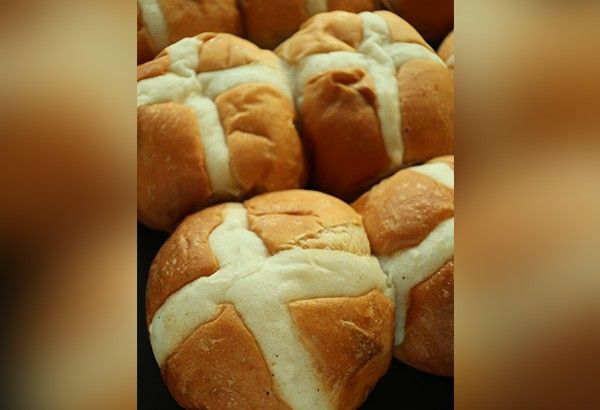The breads of Lent

MANILA, Philippines — Yes, there are breads that are traditionally “reserved” only for the Lenten Season or, specifically, for a certain day during the Holy Week. Most of them are of Greek or Jewish origin.
Tradition dictates that they are eaten on, say, Good Friday or Easter Sunday. There are also Lenten breads that can be eaten for the whole 40 days of Lent.
These days, however, tradition no longer dictates; it only suggests that a certain bread be eaten on a certain day. It is also more lenient now when it comes to implementation — meaning, anyone who is interested to try the bread are welcome to do so. Bakers in other places, such as the Philippines, now also bake the more popular ones and make these available to those who are interested to try them.

Challah
This bread also goes by the names Hallah, Khala, Khale and Chaika, among others. A special bread of Ashkenazi Jewish origin, it is usually braided and typically eaten on ceremonial occasions such as Shabbat and major Jewish holidays.
Challah used for ceremonial rites is made of dough from which a small portion has been removed and set aside as an offering. Similar braided breads, such as Kalach and Vánocka, can be found in Central and Eastern Europe.
Challah is available in the Philippines, albeit on a limited basis. The cloud kitchen Midnight Bakers has it on its regular bread menu, so you can order it for delivery any time via mobile number 0917-6267200.
Hot cross buns
These are spiced buns usually made with fruit. They got their name from the fact that the buns are marked with a cross on top.
Originating from the United Kingdom, hot cross buns are traditionally eaten on Good Friday. These days, they are a Good Friday bread eaten not just in the UK but also in Australia, New Zealand, Turkey, South Africa, Canada, the United States of America, India, Pakistan, Malta and the Commonwealth Caribbean.
Hot cross buns mark the end of the Lenten season and each part has a certain meaning — the cross represents the crucifixion of Jesus, the spices inside symbolize the spices used to embalm Him, and orange peel reflect the bitterness of the time He had to spend suffering on the cross.
Lagana
This is a Greek flatbread traditionally baked to be eaten on Clean Monday (Kathari Deuteria), which is the first day of Lent in the Greek Orthodox tradition.
Typically flat, oval-shaped, and the top decorated with impressed fingertips and sprinkled with sesame seeds or herbs, and seasoned with olive oil, the Lagana was traditionally prepared as an unleavened bread but is now more commonly leavened.
Tsoureki
A Greek Easter bread traditionally served during Easter Sunday.
Soft, fluffy and with a lovely semi-soft crust, it has three braids that symbolize the Holy Trinity. It owes its distinct taste to two spices: mastic (pine resin gum) and mahleb (ground cherry seeds).
Nowadays, Tsoureki is enjoyed in different flavors and toppings throughout the year for breakfast or snacks. To distinguish the Easter variety, it is the only one with dyed red eggs in the center to symbolize the blood of Christ.
Pogacha
This bread is also goes by the name Pogaca and Pogacsa. It is Balkan, Serbian, Hungarian, Croatian, Turkish and Macedonian at the same time. Its bread has a soft crust, fine crumb texture, and brown color.
RELATED: Still fasting for Lent? Here are some seafood options




















